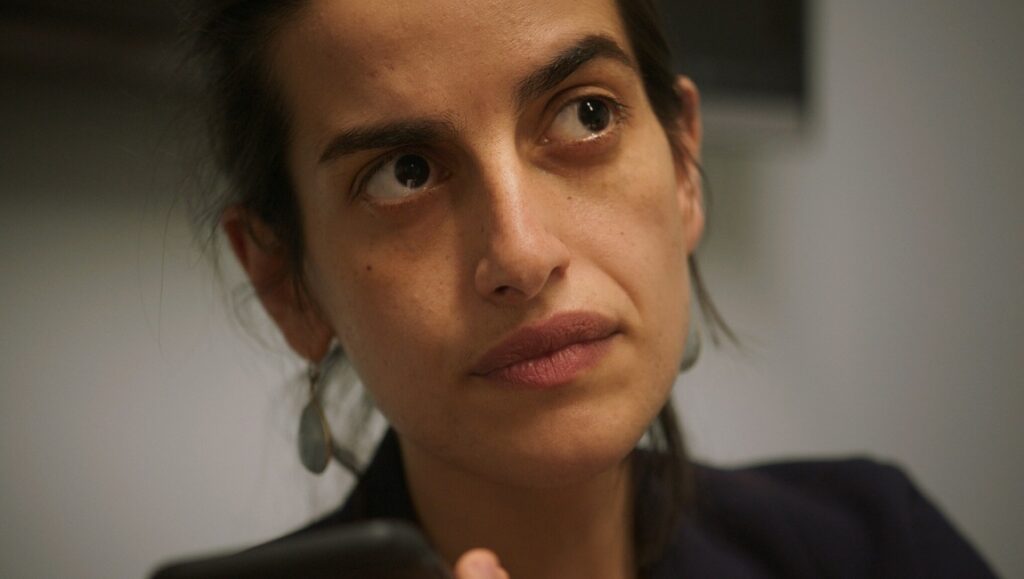The overwrought, overexplained, overedited maximalism of modern-day blockbuster cinema is a somewhat dumbed-down version of what film theorist Tom Gunning championed early, non-narrative silent cinema as: a thrilling, moving, purely sensorial “cinema of attractions.” Sure, it provides great entertainment (mainly as opposed to today’s Marvel-ism). But it also does much of this at the cost of making the audience lazy watchers and listeners. Anything informationally dense is consistently explained; “downtime” — usually, still and small — is either truncated or entirely eliminated.
Luke Lorentzen’s A Still Small Voice makes clear in its title which end of the maximalist-minimalist spectrum it occupies. Its narrative does not center on an operating doctor or an emotionally devastated griever or, as was the case with Lorentzen’s 2019 documentary feature Midnight Family, an emergency ambulance involved in transporting critical patients to a hospital as quickly as possible. Instead, it focuses on chaplain carers who provide spiritual and mental care to gravely ill patients and grieving family members. Specifically, the film follows Margaret “Mati” Engel, a chaplain completing her year-long residency at the Mount Sinai Hospital in Covid-hit New York in 2020. Lorentzen narrativizes her intimately caring relationship with her patients and an increasingly fractious one with her supervisor, Reverend David Fleenor, in order to shine a light on something that’s either taken for granted or forgotten because of its “smallness” — the need to take care of caretakers.
The film’s form facilitates this aim, creating a near-consistent atmosphere of therapeutic calm (in New York City, of all places!). Its key characteristics — primarily static camera, total absence of non-diegetic music, and reliance on long takes — emphasize the stillness, smallness, and softness mentioned and implied by its title, and this slow(er) approach sharply contrasts with modern-day fairground cinema to significant effect. Subtracting “attraction” allows the subtraction to become the attraction. In other words, the lack of camera movement, musical manipulation, and frenetic editing makes the very act of waiting, listening, and caring the film’s primary action.
While Mati’s interactions with her patients and grievers provide some of the film’s most quietly profound moments — the opening wide shot of her waiting to hold her patient’s hand; later, a close-up shot of her inhaling deeply, trying to remain calm and collected as a grieving widow seeks spiritual answers from her — A Still Small Voice is most illuminating when it focuses on the relationship between Mati and Reverend Fleenor. Initially, their group supervisor meetings are incredibly accommodating, allowing us a window into the caretaking chaplains’ individual and shared emotional and mental states. In her individual session with the Reverend, Mati even tells him to point out her emotional weaknesses “harshly.” (The Reverend, then, himself, becomes the cared for; an online therapist helps him untangle the authoritarianism that comes with his supervisory role). Throughout the film, however, this harshness, despised by the Reverend but desired by Mati as honest feedback, fractures the relationship between the two (seemingly) irreparably. The mental and emotional “exhaustion” of their work makes Fleenor lose his calm, becoming the loud, angry, rule-setting authoritarian he feared; Mati, wanting emotional support and not the honesty she asked for, complains to human resources about Fleenor’s “harsh” treatment of her. It’s a seismically loud moment within the context of the rest of the film’s quietness, Lorentzen’s “cinema of attraction” moment that he uses to demonstrate the unquantifiable value of maintaining a small, silent, soft voice.
DIRECTOR: Luke Lorentzen; CAST: —; DISTRIBUTOR: Abramorama; IN THEATERS: November 24; RUNTIME: 1 hr. 33 min.


Comments are closed.